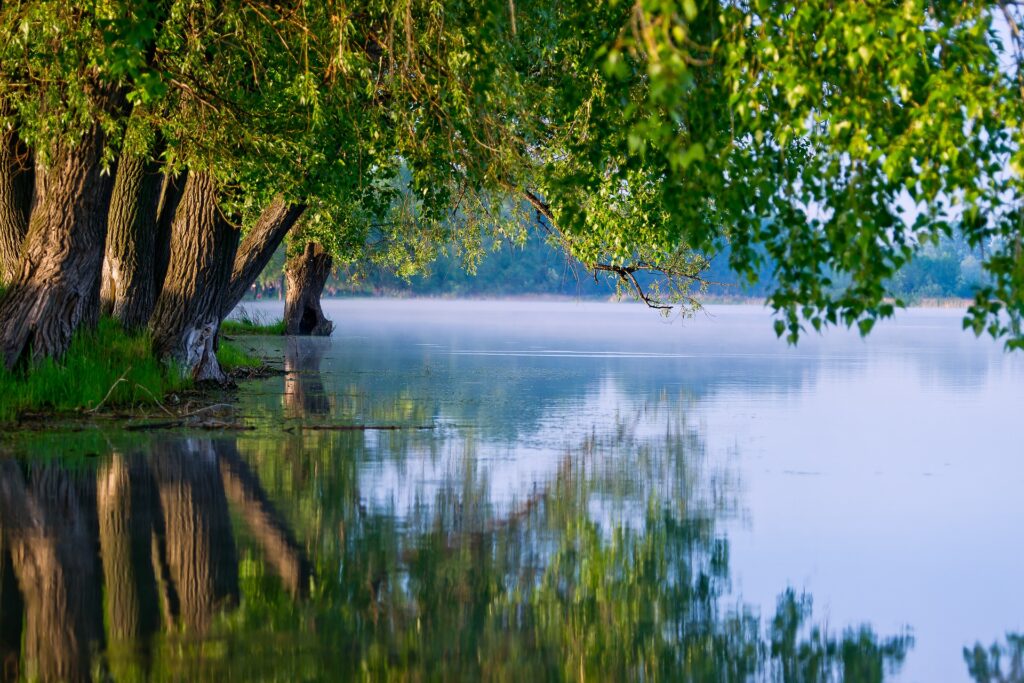
Odra River in numbers
- 855 km – total length of the Odra
- 742 km – river’s section flowing through Poland
- 124 049 km² – basin area (including the Szczecin Lagoon)
- 28 – cities located on the Odra
- 7 – national parks located in the Odra basin area
The Odra is Poland’s second largest river. Its source is in Oderské vrchy in the Sudetes located in the Czech Republic. Its basin area is 124,049 km² (including the Szczecin Lagoon, while without the Szczecin Lagoon – 118,861 km²); out of this area, 107,169 km² (86.4%) is located within the borders of Poland, 7,278 km² (5.9%) within the borders of the Czech Republic, and 9,602 km² (7.7%) in Germany. The total length of the Odra is 855 km. A 112 km long section of the river flows in the Czech Republic and its short stretch forms the Polish-Czech border, while a 742 km long section flows through Poland, including an about 179 km long stretch that forms the border between Poland and Germany. The Odra ends its course in the Szczecin Lagoon. The average annual water discharge into the Baltic Sea is 17.5 billion m³. In extremely dry years, the discharge into the Baltic decreases to about 9.0 billion m³ per year, while during extremely wet years it is about 23 billion m³. In Racibórz the flow of water in the Odra ranges from a safe flow of about 500 m³/s to flows even greater than 3000 m³/s during the largest flood events (July 1997).
The Odra is a navigable river (E-30) along its stretch from Kędzierzyn-Koźle (together with the Gliwice Canal which starts in Kędzierzyn-Koźle) downstream its course. In a 186 km long section from Kędzierzyn-Koźle to Brzeg Dolny, there are 24 barrages (including the Koźle barrage located upstream of the connection with the Gliwice Canal). This is the section of the so-called canalized Odra. The construction of the Malczyce barrage, downstream of which the river is regulated using only groynes and longitudinal dikes, is now nearing completion. This is the so-called free flowing Odra. Through a system of canals, the Odra has a navigation connection with the Spree and the Havel.
The Odra and most of its tributaries are a very important ecological corridor with relatively little changed natural conditions (compared to most of the EU’s rivers). Within the Odra basin area, there are 7 national parks. In Poland these are the following: Karkonosze National Park, Stołowe Mountains National Park, Wielkopolska National Park, Drawa National Park, Warta River Mouth National Park, and Wolin National Park; in Germany it is the Unteres Odertal (Lower Odra Valley) National Park. Apart from that, within the basin area there are landscape parks, nature reserves, NATURA 2000 sites, and other forms of spatial nature conservation.
The area covered by the Odra River Basin Flood Protection Project included the Odra valley between the Czech border from the Chałupki gauging station (at km 20.7) and the Brzeg Dolny barrage (at km 282). Along this stretch of the river with a length of about 260 km, the following cities are located, among others: Racibórz, Kędzierzyn-Koźle, Krapkowice, Opole, Brzeg, Oława, and Wrocław, as well as smaller towns and villages.





